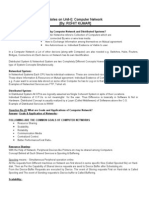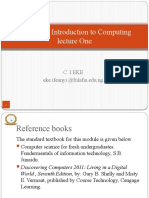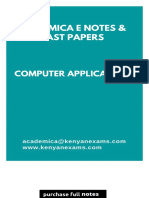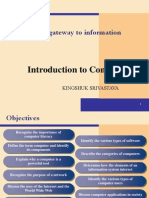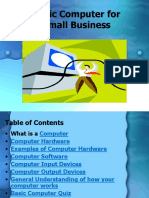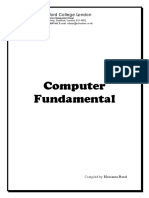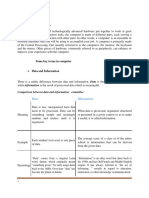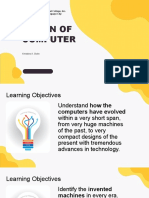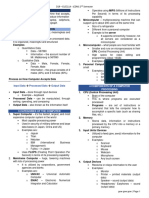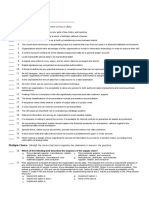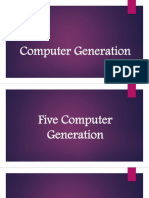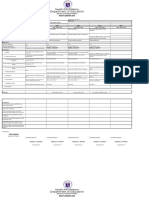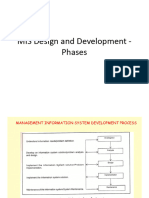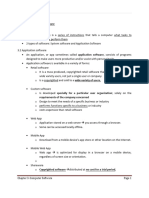0% found this document useful (0 votes)
476 views22 pagesComputer Introduction (Fundamental Computer)
This document provides an introduction to computers. It defines a computer as an electronic device that processes data by converting it into useful information. The basic components of a computer are the central processing unit (CPU), monitor, keyboard, and hardware, software, and data. A computer stores, processes, and retrieves data as needed. It can perform tasks quickly, accurately, and without tiring. Computers also have powerful memory and can perform both arithmetic and logical operations. The document discusses input and output devices, primary and secondary storage, and the different generations of computers based on the technology used. It provides examples of different types of computers classified by purpose and size.
Uploaded by
write2anoopCopyright
© Attribution Non-Commercial (BY-NC)
We take content rights seriously. If you suspect this is your content, claim it here.
Available Formats
Download as PPT, PDF, TXT or read online on Scribd
0% found this document useful (0 votes)
476 views22 pagesComputer Introduction (Fundamental Computer)
This document provides an introduction to computers. It defines a computer as an electronic device that processes data by converting it into useful information. The basic components of a computer are the central processing unit (CPU), monitor, keyboard, and hardware, software, and data. A computer stores, processes, and retrieves data as needed. It can perform tasks quickly, accurately, and without tiring. Computers also have powerful memory and can perform both arithmetic and logical operations. The document discusses input and output devices, primary and secondary storage, and the different generations of computers based on the technology used. It provides examples of different types of computers classified by purpose and size.
Uploaded by
write2anoopCopyright
© Attribution Non-Commercial (BY-NC)
We take content rights seriously. If you suspect this is your content, claim it here.
Available Formats
Download as PPT, PDF, TXT or read online on Scribd
/ 22

